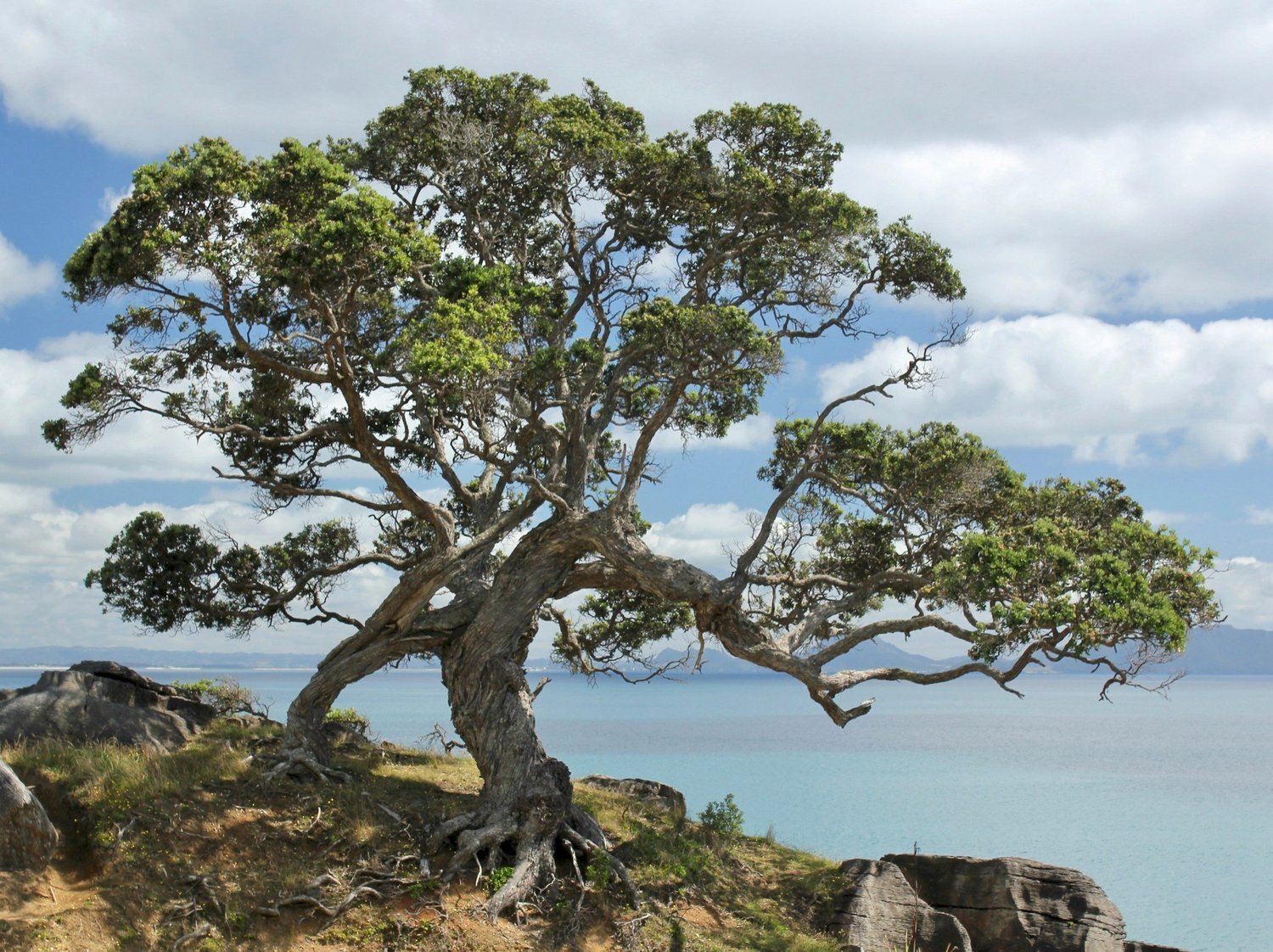The Practice of Transition | By Marni Adlam
BY MARNI ADLAM
This article was first published in the July 2024 issue of Refresh - Matariki.
As a Māori who grew up rurally,I consider the natural environment my greatest teacher. The changing tides determine when to search for kūtai and pipi, the moon cycle tells you when kaimoana is fat, and a sudden cold gust of wind can tell you how long you have to get home before it rains! Lately, I have learned some great lessons from trees.
Last year, I bought a kaffir lime sapling and planted its tiny roots into the soil. I watered and fed it regularly, and gave it optimum sunlight. It was well outside its natural sub-tropical environment, but I had firm hopes for its survival. When the climate changed and torrential rain became the new normal in Auckland, it lost all its leaves and began to turn yellow. I lost hope, but out of habit I continued to give it care.
The following spring my little tree started to sprout new growth. When it had grown twice as big, I decided to repot it. As I lifted it out, I saw that its roots had spread wide and were as deep as the sapling was tall.
While I had watched it die back above the surface during winter, it had spread its growth downwards to help it survive the harsh environments and to develop stability for the next season. This is a common trait in trees: to flourish outwardly in one season, then below the surface in another. We too can flourish in every season if we pay attention to how we can thrive according to our environment.
The constellation of Matariki was a marker that Māori used to determine how to thrive in the coming year. Looking to the stars involves looking up from our circumstances and seeking guidance beyond ourselves.
In Proverbs 4:20, the author urges pursuers of wisdom to incline their eyes and ears. Isaiah is urged to lift his eyes towards seeing the restoration of Israel (Isa 49:22). The act of inclining our eyes and chin, opens up the chest for receiving deeper breaths, as well as lifting our spirits.
Alongside this, the action of stargazing and scanning the skies can release tension in the vagus nerve, which helps us to: reset, digest and restore; relieve anxiety; and regulate emotion more effectively.[1] These things help to ground us in the present moment, and sharing that moment with loved ones is even better!
Matariki invited the closing of a chapter in time and the beginning of a new one. In this transitional period, the constellation aided remembrance of the past and planning for the future, by following the same principle of inclining our eyes and seeking wisdom from above and from our environment to assess our steps into the new year.
Matariki appeared in the cooler months, when harvesting was complete and reflection and preparation for the next year had commenced, and was strategically used to forecast harvests for the following year.
The constellation is visible for eleven months of the year, however, it is often challenging to locate during the time of Matariki.[2] Because of this, and how the angle of the earth in relation to the sun affects weather, moon and tide patterns, Māori were able to forecast the prosperity of their future harvests based on the brightness of the individual stars.
The brightness of the star named Tupuārangi would correlate to the health of trees, which affected the prosperity of birds. The star, Waitī, was connected to the harvest of fresh water fish, whilst Waitā was connected to the harvest of seafood.[3] Māori could forecast what the year could bring, which helped to inform decisions on where to most focus their attention and energy in harvesting.
As we look ahead, we may want to ask: God, where in particular do you want me to focus my attention this year?
The star Pōhutakawa connected to loved ones who had passed on in the previous year. The first step of a Māori tangihanga was a prayer immediately after death, called the Tuku Wairua, or the releasing of the spirit from the known world. It was believed that Te Waka o Rangi (the waka of the sky) would descend at Matariki, collect the souls who had passed in the previous year, and take them up to the stars.
During Matariki, special attention was given to remembering these loved ones, releasing their memories in love, and being at peace with grief and loss. It is an important acknowledgement, that death and loss are integral parts of the cycle of life.
As a contemplative practice for Matariki, we remember those who have passed on. We may also remember other circumstances where we are being invited to new levels of surrender.
Matariki reflections sit within a Māori worldview that encompasses our past, present and future, and can help us to assess our position in the current season. In some seasons, everything looks great on the surface, and it’s clear to us and the world that we’re thriving.
In other seasons, the cold winter of life breaks us and the only way to survive is to lose our beautiful leaves and flowers and to dig deep below the surface for sustenance so we can make it to the next season. All seasons pass, but paying attention to the current season will give us essential information to thrive in life.
[1] Theresa Larkin, "Our vagus nerves help us rest, digest and restore. Can you really reset them to feel better?," (2024), https://rb.gy/cogbf2
[2] "Early Māori astronomers predicted year ahead by stars of Matariki," (2021), https://rb.gy/u55iwc
[3] "The 9 Whētu (Stars) of Matariki - AUT," (2024), https://rb.gy/b4yptg
Marni Adlam (Muriwhenua/Ngāpuhi/Whakatōhea) is from Ahipara and enjoys exploring the complexities around faith and spirituality in the Māori world, with an appreciation for cultural heritage, spirituality and evidence-based research. She currently studies her Masters in Theology with Otago University



